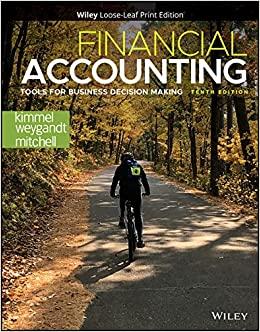Question
Question 4. Travel Ltd, mass produce suit cases. These cases are made in a variety of colours, but only in one design. The company Management
Question 4.
Travel Ltd, mass produce "suit cases". These cases are made in a variety of colours, but only in one design. The company Management Accountant has provided the below information which was extracted from the company's standard cost sheet for the month of March. This information was based on the production of 12,000 cases.
Plastic | 8 metres at $3.50 per metre |
Steel | 3 metres at $2.50 per metre |
Direct labour | 3 hours at $7.00 per hour |
Actual costs incurred during the month of March were as follows:
- Purchased 125,000 metres of plastic at $3.45 per metre
- Purchased 85,000 metres of steel at $2.10 per metre
- Direct labour totalled $360,000 for 60,000 hours
- Used 140,000 metres of plastic at $2.45 per metre
- Used 52,000 metres of steel at $3.10 per metre
Required: ALL WORKINGS MUST BE SHOWN. FULL MARKS WILL NOT BE AWRDED IF WORKINGS ARE NOT SHOWN.
Calculate each of the following variances and indicate whether the variance is favourable (F) or unfavourable (U).
- Calculate the direct material price variance of the steel material USED in making the products.
- Calculate the direct material quantity (efficiency) variance of the steel material USED in making the products.
- Calculate the direct labour rate variance for the products.
- Calculate the direct labour efficiency variance for the products.
- In a standard costing system, what could be the reasons for an unfavourable Direct Labour Efficiency Variable? Discuss your answer with examples
(1+1+1+1+3 = 7 marks)
Standard Costs Formulas as per your prescribed text book
PQ - Purchased Quantity; AP - Actual Price; SP - Standard Price; AQ - Actual Quantity; SQ- Standard Quantity; AR - Actual Rate; SR - Standard Rate; AH - Actual Hours; SH - Standard Hours
Material Variances
Direct Material Price Variance (based on purchased quantity)= PQ(AP - SP) / (PQ x AP)-(PQ x SP)
Direct Material Quantity Variance = SP(AQ - SQ) / (AQ x SP) - (SQ x SP)
Total Material Variance = Price + Quantity from above
SQ in DMQV means Standard Quantity Allowed given actual output
Labour Variances
Direct Labour Rate Variance = AH(AR - SR) / (AH x AR) - (AH x SR)
Direct Labour Efficiency Variance = SR(AH - SH) / (AH x SR) - (SH x SR)
Total Labour Variance = Rate + Efficiency from above
SH in DLEV means Standard Hours Allowed given actual output
Step by Step Solution
There are 3 Steps involved in it
Step: 1

Get Instant Access to Expert-Tailored Solutions
See step-by-step solutions with expert insights and AI powered tools for academic success
Step: 2

Step: 3

Ace Your Homework with AI
Get the answers you need in no time with our AI-driven, step-by-step assistance
Get Started


